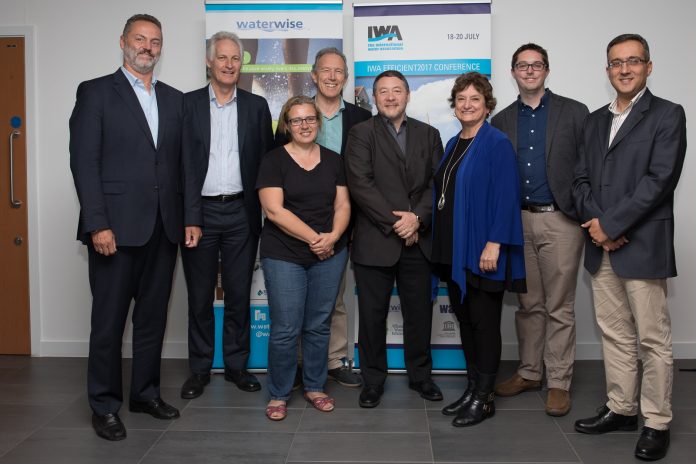
Waterwise hosted the IWA ‘Efficient 2017’ conference, leveraging new standards, labels, incentives, data, markets and policies
Demand management through conservation and leak reduction is arguably the cleanest, cheapest, fairest and fastest way for any city to achieve water security. It can help the world meet the Sustainable Development Goals. It’s also at the heart of resilience, added Trevor Bishop, Strategy and Policy Director of the UK’s regulatory agency, Ofwat.
“But if water efficiency is so great,” asked Stuart White, Director of the Institute for Sustainable Futures (ISF) at the University of Technology Sydney, “Why isn’t it happening everywhere?”
On 18 July, hundreds of water professionals arrived in the ancient Roman spa town of Bath, England, to answer that rhetorical question. Some said it is happening, and shared experiences about how cities are doing more with less.
Change comes quietly through market pressure. Chris Philpot of Smart Approved WaterMark shared how his expert panel advises and certifies a broad array of goods and services in Europe and Australia, from pool and garden care to car washing and rainwater harvesting. The companies seek exposure and measure up.
Meanwhile Jonah Schein described how 25,000 parts and products–from urinals to dishwashers to irrigation controllers–have since 2006 earned the US federal government’s WaterSense label. These in aggregate have reduced demand by more than 2.1 trillion gallons over the last decade, saving consumers US$43 billion off their water and energy bills.
Yet a lingering problem is that the playing field is not level, limiting real change. Various sessions pointed out that efficiency eats into the bottom line, and cities that pay for new supply infrastructure add assets that count while invisible demand management does not. “We’re doing the economics wrong,” Stuart White suggested in a case study in how to break the Kuznets curve, “unless we can cancel lost revenue as a net benefit. Otherwise there’s no incentive for the utility to invest in savings.”
Others harnessed Big Data in new ways. Andrew Tucker of Thames Water leveraged smart meters to reduce usage through behavioural change, leak detection, home visits, and ‘GreenRedeem’ incentives through a long-term online portal.
Christine Boyle, founder and CEO of Valor Water Analytics, showed how through automation and machine learning, her technology could locate hidden revenue within utility systems through an “apparent loss detection tool.”
“Cluster analysis” tools, combined with real-time metering allowed Rob Lawson of Artesia to explode the very concept of ‘the water customer’ into several behavioural types, each of whom had different levels of engagement and demand at disparate times of day.
Some efficiency veterans have turned inward. Paul Lander of the University of Colorado and Michelle Maddaus revealed “the campus as a living laboratory.” Why? Colleges are needy. The University of California alone uses nearly 20 billion litres per year. They’re also big. Cloistered mini-cities of students, faculty and staff in arid California add up to one-tenth of the population. But despite technical expertise and open minds, colleges had not connected the dots, and were thus ripe for interventions, which revealed dramatic savings.
Wrapping up the conference, host Mary Ann Dickinson, Chair of IWA’s Efficient Urban Water Management Specialist Group described how cities worldwide face the same pressures: reduced water availability, rising energy costs, changing weather patterns, and new supplies becoming more expensive than ever. As head of the Alliance for Water Efficiency, she advocated for “Net Blue” a national ordinance that allows growth but drives water neutrality though “water offsets.”







